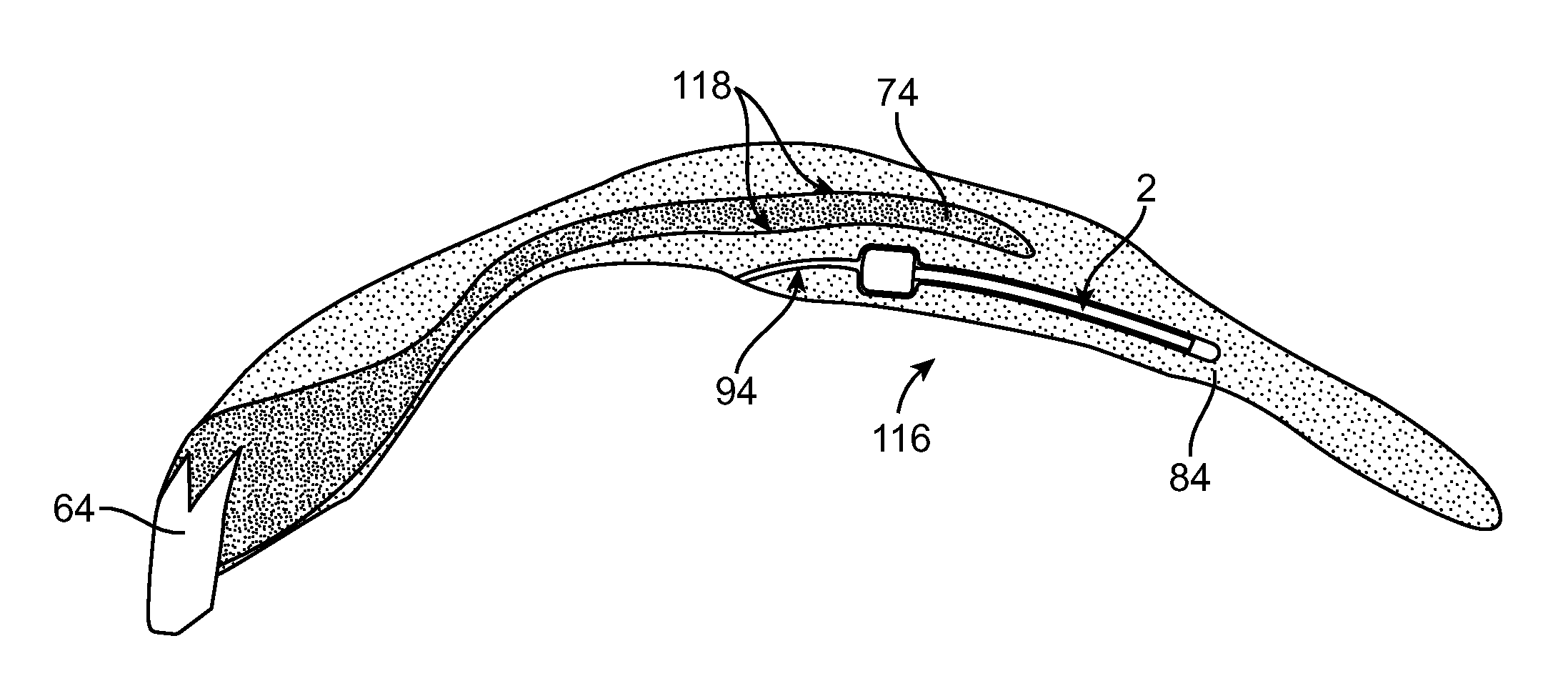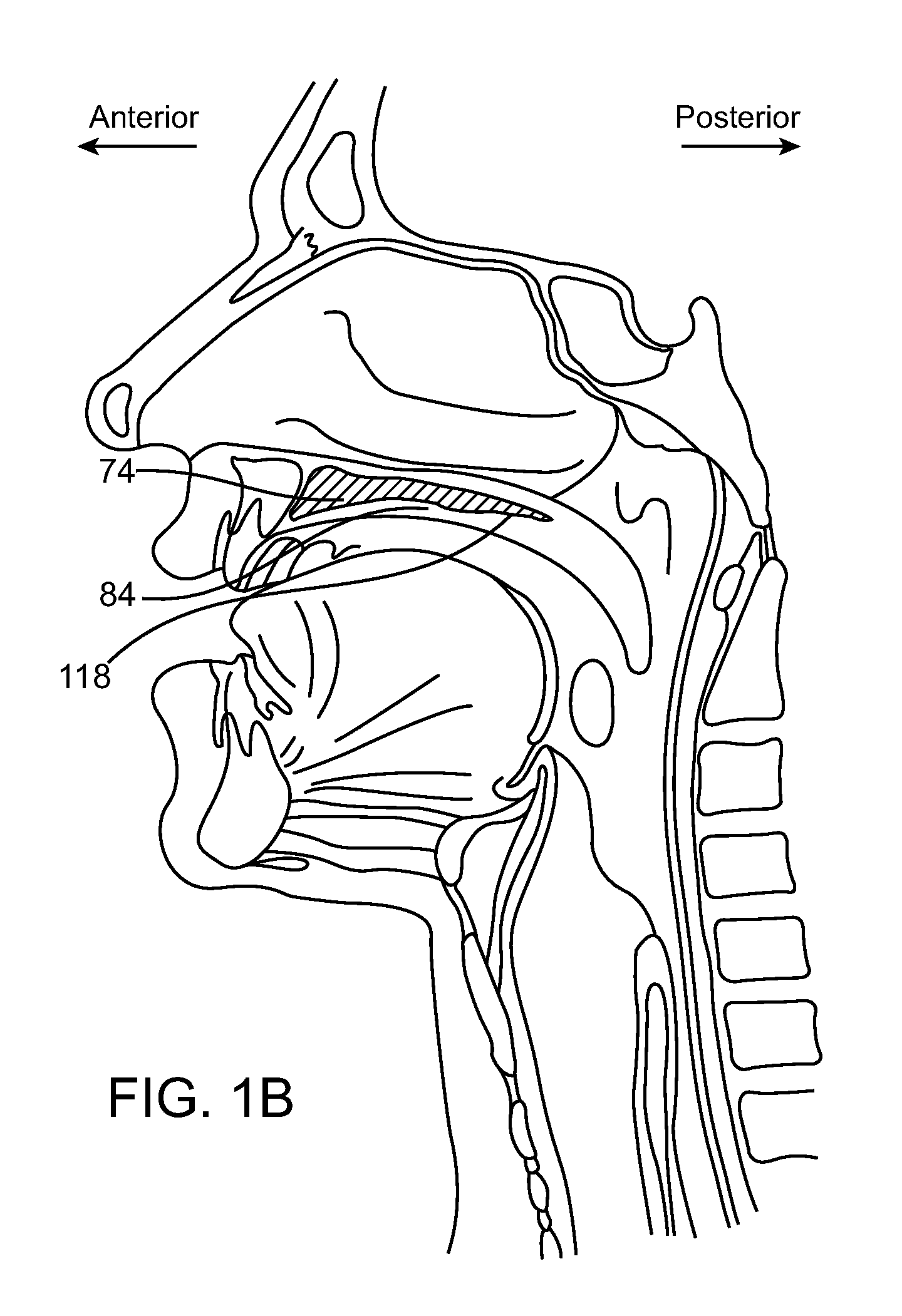Delivery tools for sleep disorders treatment implant and methods of implantation
a technology for implanted devices and sleep disorders, applied in the field of implanted devices for sleep disorders treatment, can solve the problems of affecting the quality of life of patients, so as to prevent excessive extension of the blade, prevent excessive cavity depth, and facilitate access
- Summary
- Abstract
- Description
- Claims
- Application Information
AI Technical Summary
Benefits of technology
Problems solved by technology
Method used
Image
Examples
Embodiment Construction
[0038]The embodiments of the present invention are directed toward tools and methods for inserting an implant device that treats snoring and apnea. The tools and methods can make a cavity in patient's soft and hard palate and can insert the implant device in the cavity. The tools and methods have numerous advantages. For example, the tools can have visually observable markings that can be aligned with the incision edge, thus controlling the depth of the cavity. The tools may have stoppers to prevent excessive extension and retraction of the blade. In some embodiments, the same tool may be used for the tissue cutting and implant insertion. The details of the exemplary embodiments of the present invention are explained with reference to FIGS. 1-13.
[0039]FIG. 1 illustrates the terminology used in describing position of an object with reference to the patient's head. As shown by the arrows in FIG. 1, the position of an object can be anterior or posterior, superior or inferior, and left ...
PUM
 Login to View More
Login to View More Abstract
Description
Claims
Application Information
 Login to View More
Login to View More - R&D
- Intellectual Property
- Life Sciences
- Materials
- Tech Scout
- Unparalleled Data Quality
- Higher Quality Content
- 60% Fewer Hallucinations
Browse by: Latest US Patents, China's latest patents, Technical Efficacy Thesaurus, Application Domain, Technology Topic, Popular Technical Reports.
© 2025 PatSnap. All rights reserved.Legal|Privacy policy|Modern Slavery Act Transparency Statement|Sitemap|About US| Contact US: help@patsnap.com



